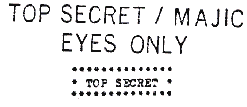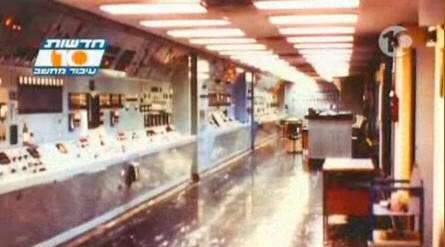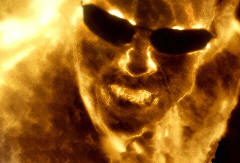"OPERATION MAJESTIC-12 is a TOP SECRET Research and Development/ Intelligence operation responsible directly and only to the President of the United States. Operations of the project are carried out under control of the MAJESTIC-12 ( MAJIC-12 ) Group which was established by a special classified executive order of President Truman on 24 September 1947"
Truth Seekers and Light workers:
All Majestic-12, Majic
and MJ-12 DOCUMENTS WERE PLANTED USA DISINFORMATION, containing some truth but mostly lies.
The myth of MJ-12 surfaced on the web
circa 1984 and was shown to Linda Moulton Howe and an over eager Bill Moore by Richard Doty. Doty states that he did not create the documents, but acknowledges the USI special office in Washington or possibly somebody outside the government were behind it, along with the disinformation campaign itself. This perception management of the UFO community in part gathered information about how the public responds to inentional manipulation. Even the FBI and OSI were taken in and investigated the hoax, questioning Doty himself.
Sure we all want to find the smoking gun, but not like this! Check
it out for yourselves....
See this site for a skeptical historical
analysis of the documents. Or Ignore the entire issue
completely.
Under Nixon, Ford, and Carter it was called the "40 Committee", and under Reagan it became the "PI-40 Committee".
Richard Doty was a big focus of the Mirage Men book and documentary. Doty was a special agent for counter-intelligence in the air force. He was part of the special investigations unit for over 8 years. He has admitted giving false information to Paul Benowitz via Bill Moore to steer Benowitz away from analyzing radio signals which were top secret.
In Stephen Greer's new book Unacknowledged Doty goes on the record to say that counter intelligence even resorted so far as to dress humans as aliens to scare those who they decided had seen too much.
More about JASON and the Collins Elite. Greer claims that there are religious fanatics among them. Nick Redfern's book Final Events explores this in more detail.
Early military investigations into UFOs
The 3 year SHAPE study concluded in 1964. SHAPE was designed initially to determine if UFOs noticed on radar were a threat to Allied Forces in Europe. It was in the early ‘60s that an Air Force General gave an order to shoot them down.
Bob Dean: "Well, we lost a lot of aircraft, a lot of guys got out, they bailed out in time. A lot of planes were lost. We lost a few pilots. Now that order to shoot them down was revoked within 90 days. ...And they never issued that again because they learned their lesson. Don't mess with these guys.
That order was revoked within 90 days. We lost something like 30 aircraft. Because when we started shooting at them, they had a unique way of eliminating all of the electrical systems in our aircraft. They didn't shoot bullets at us. We shot bullets at them, and missiles and everything else. But if we attacked them, they had an incredible scientific procedure where they could literally nullify all of the electrical operations in our aircraft.
The Assessment concluded we were dealing with incredibly advanced technology. We were dealing with four different groups, all humanoid, but one group looked totally human.
We concluded in this study that they were from somewhere else. Another planet, another star system, perhaps another galaxy. We concluded that they did not... they were not malevolent or hostile - overtly. They certainly were able to defend themselves. But they did not have an agenda, an aggressive agenda, that was hostile, because they had not smashed and torn and broken and destroyed our military.
General Lee's aide told me, he said: "When the old man read that story, that report, The Assessment, it hit him like a truck, hit him like a ton of bricks." He told me that the General threw his hat across the desk and he says, "Do you know what the hell this means? Everything we've got, everything we've done, everything we've had, doesn't mean a damn thing."
The shock was pretty serious. Here you have a highly decorated World War II Air Force General who's been all over the place... I think he flew B-29s in the Pacific... he said, "If this is all true, if this is real, what we've got, all our military, our Air Force, our bombs, our planes, doesn't mean a thing."
The conclusions of the study after three years concluded that they had been coming here for a very long time. That they apparently had some involvement in the origins of our species. Big shock to traditional people, particularly Christians and Muslims. It was interesting because apparently there wasn't a threat involved. If they had been hostile or aggressive it would have been over a long time ago.
Now: what was their purpose? Well, the study was not able to conclude that. It said that the military committee will continue this research, which indicated to me that the study in some form had continued... that this document in '64 was simply an initial conclusion."
Phil Corso had personal contact with an alien at White Sands.
He was in charge of the security of the range one time. And something came in, the radar picked it up. He hopped in his car and went out to see what the hell it was. There is a UFO sitting on the ground. There's a guy standing beside it, and Corso walks over to him and says, you know, "What the hell are you, who are you, and where are you from, and why are you here"?
This fellow says, "I just came to talk". Corso asks him, "Well, are you with us, or are you agin' us?" Simple military type question. You know, are you with me or are you against me? This guy says, "Neither, we're neither for you or are we against you". He had a conversation with this guy that lasted over an hour.
My Field Guide to ExtraTerrestrials
My Field Guide to Extra-Terrestrials My Field Guide to ExtraTerrestrialsMy Field Guide to Extra-Terrestrials
As payment for Israeli participation in the Suez Crisis of 1956, France provided nuclear expertise and constructed a reactor complex for Israel at Dim0na capable of large-scale plutonium production and reprocessing. The United States discovered the facility by 1958 and it was a subject of continual discussions between American presidents and Israeli prime ministers. Israel used delay and deception to at first keep the United States at bay, and later used the nuclear option as a bargaining chip for a consistent American conventional arms supply. After French disengagement in the early 1960s, Israel progressed on its own, including through several covert operations, to project completion. -UFAF Conterproliferation papers This paper is a history of the Israeli nuclear weapons program drawn from a review of unclassified sources. The gist is that Israel has been able to use its arsenal as a deterrent to the Arab world while not technically violating American nonproliferation requirements.
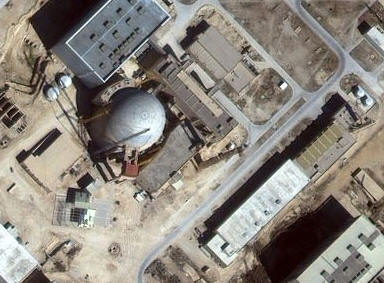

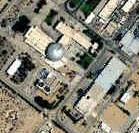



Dim0na Reactor (dome) and Plutonium plant,
a non-place on Google Earth
deep 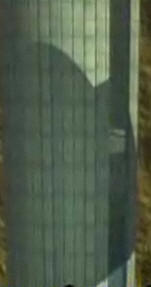 underground
underground

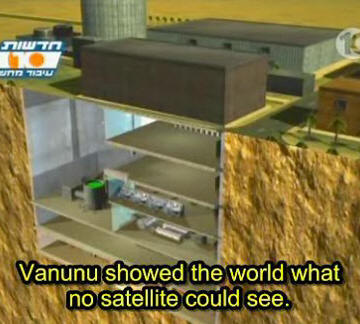
It is believed to produce 40 Kg of Plutonium a year.
The Plutonium separation facility has one purpose:
the manufacture of atomic bombs
Israel cuts links with the BBC
for reporting news like this
DURING THE COURSE OF 1962-1963, a significant shift took place in the
attitude of the Western powers, particularly the United States, toward
Israel's nuclear development. Until then, American policy was
characterized by moderation and a low profile. Change began several
months after Ben-Gurion's visit to the United States and his meeting
with President Kennedy in May, 1961. Thereafter, the American government
exerted increasingly intense and unrelenting pressure to allow ongoing
supervision of the nuclear reactor in Dim0na.
Shalom, Zakai.
Kennedy, Ben-Gurion and the Dim0na Project 1962-1963
http://muse.jhu.edu/login?uri=/journals/israel_studies/v001/1.1shalom.html
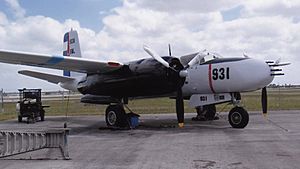
This US Douglas A-26 C Invader was painted in fake Cuban Air Force colors for the military invasion of Cuba undertaken by the CIA-sponsored paramilitary group Brigade 2506 in April 1961, an example of an early and well known CIA false flag attack.
Notes on Kennedy's assassination
1. Kennedy was pressuring for a full
inspection of Dim0na, which some in the CIA and Mossad couldn't allow.
Soon after taking office in 1961, President Kennedy pressured Israel to
allow an inspection. Ben Gurion agreed, and an American team visited the
installation that May.
In
the 1960's Americans visited the first floor,
which is actually the 2nd floor of the brown building without windows.
They saw the restaurants and the offices.
A special wall had been
constructed hiding the elevators to the underground levels.
1963: Kennedy refuses to sign any security arrangement with
Israel. After Kennedy assassination brings the very pro-Israel
Lyndon Johnson to power. (Not surprisingly there is an
assassination conspiracy theory that the
Mossad killed Kennedy.)
2. E Howard
Hunt's deathbed confession circa Jan 2004: former
CIA agent and Watergate conspirator E. Howard Hunt admits he was
approached to be part of a CIA assassination team to kill JFK.
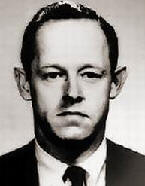
He loved action as much as he hated communism, and he soon began
operating with a level of arrogance entirely typical of the CIA. He was
instrumental, for instance, in planning the 1954 coup in Guatemala that
overthrew the left-leaning, democratically elected president, Jacobo
Arbenz, and ushered in forty years of military repression, which
ultimately cost 200,000 Guatemalans their lives. Years later, when asked
about the 200,000 deaths, E. Howard said, "Deaths? What deaths?"
Hunt alleges on the tape that then Vice President Lyndon B. Johnson was
involved in the planning of the assassination and in the cover-up,
stating that LBJ, "Had an almost maniacal urge to become president, he
regarded JFK as an obstacle to achieving that." Shortly before his
death, his father had felt "deeply conflicted and deeply remorseful"
that he didn't blow the whistle on the plot at the time and prevent the
assassination, but said that everyone in the government hated Kennedy
and wanted him gone in one way or another. Kennedy's promise to "shatter
the CIA into a thousand pieces and scatter the remnants to the wind" was
being carried out and this infuriated almost everyone at the agency.
Read the Rolling Stone article regarding Hunt's confession to his son.
“LBJ was the head of a long list of those who were waiting for a change in the executive branch.”
Brief history Cord Meyer: Allen W. Dulles made contact with Cord Meyer in 1951. He accepted the invitation to join the CIA. Cord was a graduate of Yale, and a darling of the East Coast elite in power at the time. Dulles told Meyer he wanted him to work on a project that was so secret that he could not be told about it until he officially joined the organization. Meyer was to work under Frank Wisner, director of the Office of Policy Coordination (OPC). This became the espionage and counter-intelligence branch of the CIA. Wisner was told to create an organization that concentrated on "propaganda, economic warfare; preventive direct action, including sabotage, anti-sabotage, demolition and evacuation measures; subversion against hostile states, including assistance to underground resistance groups, and support of indigenous anti-Communist elements in threatened countries of the free world." But by August, 1953, Joseph McCarthy had accused Cord Meyer of being a communist! By 1954, Cord Meyer became disillusioned with life in the CIA. It would not be the last time.
In
November, 1954, Meyer replaced
Thomas
Braden
as head of
International Organizations Division. Meyer began spending a lot of time
in Europe.
One of Meyer's
tasks was to supervise Radio Free Europe and Radio Liberty, the United
States government broadcasts to Eastern Europe. According to
Nina
Burleigh (A
Very Private Woman) Meyer was "overseeing a vast 'black'
budget of millions of dollars channeled through phony foundation of a
global network of associations and labor groups that on their surface
appeared to be progressive".
On 18th December,
1956, Mary and Cord's nine-year-old son, Michael, was hit by a car on
the curve of highway near their house and killed. It was the same spot
where the family's golden retriever had been killed two years earlier.
In 1958, Mary filed for divorce, citing In her divorce petition
"extreme cruelty, mental in nature..."


In October 1961, Mary Pinchot (Meyer) began visiting John F. Kennedy in the White House. She had been friends with Jackie, and knew JFK as a neighbor from when they lived near each other. It was about this time she began an affair with the president. Mary told her friends, Ann and James Truitt, that she was keeping a diary about the relationship.
James Angleton began bugging Mary's telephone and bedroom after she left Cord Meyer. This information came from an interview with Joan Bross, the wife of John Bross, a high-ranking CIA official. Angleton became a regular visitor to the family home and took Mary's sons fishing.
By 1963, LBJ had settled on Cord Meyer, Jr. as an opportunist, who had little left to live for, to head another secret organization. The night before the Kennedy assassination, Lyndon Baines Johnson met with Dallas tycoons, FBI moguls and organized crime kingpins - emerging from the conference to tell his mistress Madeleine Duncan Brown that "those SOB's" -the "Irish Mafia" that he called the Kennedy family-would never embarrass him again.
"Edward Clark, acting on orders from Lyndon Johnson, had arranged for all the parties who wanted Kennedy killed to contribute either cash or manpower. It was like a poker game with each player putting his chips in the pot. Oswald was the CIA's contribution. Malcolm Wallace was Johnson's chip. The mob contributed two expert hit men to take the head-on shot as a back-up to Oswald and Wallace. Big oil, namely Murchison, put up the cash.
In return, big oil got their Oil Depletion Allowance and the Military Industrial economy they dreamed about; the CIA maintained their stonghold on power and escalated the Vietnam conflict to a full blown war, the mob silenced Attorney General Robert Kennedy's pressure on Hoover to combat their criminal activities; Lyndon Johnson avoided being indicted for his corruption with Billy Sol Estes and Bobby Baker, almost certain imprisonment, and gained his zenith as the president of the United States. Not bad- eh?" more at the website LBJ killed Kennedy
In March, 1976, James Truitt, a former senior member of staff at the Washington Post, gave an interview to the National Enquirer. Truitt told the newspaper that Meyer was having an affair with John F. Kennedy when he was assassinated. He also claimed that Meyer had told his wife, Ann Truitt, that she was keeping an account of this relationship in her diary. Meyer asked Truitt to take possession of a private diary "if anything ever happened to me".
Meyer was murdered on 12th October, 1964.
In February, 2001, the writer, C. David Heymann, asked Cord Meyer about the death of Mary Pinchot Meyer: "My father died of a heart attack the same year Mary was killed, " he whispered. "It was a bad time." And what could he say about Mary Meyer? Who had committed such a heinous crime? "The same sons of bitches," he hissed, "that killed John F. Kennedy."
DIAGRAM OF A PRESIDENTIAL ASSASSINATION
E. Howard Hunt scribbled the initials
"LBJ,"
standing for Kennedy's ambitious vice president, Lyndon Johnson.
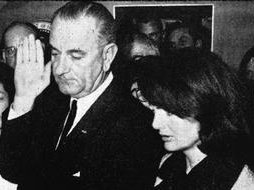
I'm happy, are you happy?
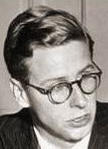
Under "LBJ," connected by a line, he wrote the name Cord Meyer. Meyer
was a CIA agent whose wife had an affair with JFK; later she was
murdered, a case that's never been solved.
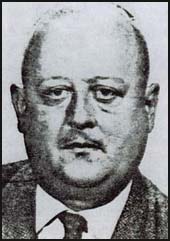
Next, his father connected to Meyer's name the name
Bill Harvey, another CIA agent;
Harvey was in constant conflict with Bobby Kennedy, who micromanaged
operations against Fidel Castro. Harvey profanely insulted the
president’s brother during a tense meeting, which led to Harvey’s
reassignment to Rome. His alcoholism worsened in Italian exile, and he
was forced to retire. He became a nonperson. When his supervision of the
plots to assassinate Castro was revealed, many labeled Harvey the
epitome of CIA excess.

also connected to Meyer's name was the name
David
Morales, yet another CIA man and a well-known, particularly vicious
black-op specialist.
David Sanchez Morales, aka "El Indio," worked for the CIA under the cover of Army employment. He was involved in PBSUCCESS, the CIA's 1954 overthrow of the Guatemalan government, and rose to become Chief of Operations at the CIA's large JMWAVE facility in Miami. In that role, he oversaw operations undertaken against the regime of Fidel Castro in Cuba.
Morales was involved in other covert operations of the CIA, reportedly including plots to assassinate Fidel Castro, training intelligence teams supporting the Bay of Pigs invasion of Cuba, the CIA's secret war in Laos and its controversial Operation Phoenix in Vietnam, and the hunting down of Che Guevera in Bolivia.
After Morales' retirement in 1975 he returned to his native Arizona, and died of a heart attack in 1978. HSCA investigator Gaeton Fonzi traced Morales to Wilcox, Arizona shortly after Morales' death, and talked to his lifelong friend Ruben Carbajal and a business associate of Morales' named Bob Walton. Walton told Fonzi of an evening, after many drinks, when Morales went into a tirade about Kennedy and particularly his failure to support the men of the Bay of Pigs. Morales finished this conversation by saying "Well, we took care of that son of a bitch, didn't we?" Carbajal, who had been present at the confession, corroborated it.
And then his father connected to Morales' name, with a line, the framed words "French Gunman Grassy Knoll."
LBJ had Kennedy killed. It had long
been speculated upon. But now E. Howard was saying that's the way it
was. And that Lee Harvey Oswald wasn't the only shooter in Dallas. There
was also, on the grassy knoll, a French gunman, presumably the Corsican
Mafia assassin Lucien Sarti,
who has figured prominently in other assassination theories.
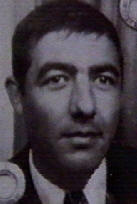
Lucien Sarti worked for the French-Corsican heroin trafficker and convicted Nazi collaborator, Auguste Joseph Ricord. It was claimed by the journalist Stephen Rivele, that Antoine Guerini organized the assassination of President John F. Kennedy. According to his contact, Christian David, the killing was carried out by Sarti and two other members of the Marseilles mob. It is believed Sarti fired from behind the wooden fence on the grassy knoll. The first shot was fired from behind and hit Kennedy in the back. The second shot was fired from behind, and hit John Connally. The third shot was fired from in front, and hit Kennedy in the head. The fourth shot was from behind and missed
About two (2) weeks before the assassination, Sarti flew from France to Mexico City, from where he drove or was driven to the U.S border at Brownsville, TX. Sarti crossed at Brownsville where he was picked up by someone from the Chicago mafia [confirmed in the book "DOUBLE CROSS" in Chapter 15]. This person drove him to a private house in Dallas rather than his staying in a hotel where records would be left; Sarti traveled on an Italian passport. It is believed the CIA were behind his death at the hands of Mexican police.
"Cord Meyer discusses a plot with [David Atlee]
Phillips...

As for Dave Phillips he made himself useful to the agency working on
Guatamalan operations. In the CIA, he'd helped mastermind the violent
removal of a duly elected leftist president in Guatemala and assisted in
subterfuges that led to the murder of Che Guevara. A
CIA and Bay of Pigs veteran. Recruited William Harvey (CIA) and
Cuban exile militant Antonio Veciana.
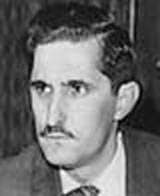
a Miami Cuban named Antonio Veciana, the founder and chief finance officer of Alpha 66, one of the most militant anti-Castro groups in action at the time of Kennedy’s assassination.
He meets with Oswald in Mexico City. . . . Then
Veciana meets w/ Frank Sturgis
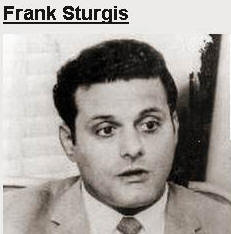
in Miami and enlists David Morales in anticipation of killing JFK
there. But LBJ changes itinerary to Dallas, citing personal reasons."
Sturgis had been the man contacted about devising a plot to murder
Castro. He had played both sides successfully, running guns to Castro's
revolutionaries and was now in charge of post-Castro gambling, as
Castro's Minister of Games of Chance. The new Cuban government didn't
know it yet, but Sturgis had turned against Castro and begun an
undercover dialogue with both the Havana Mob and the CIA.
David Atlee Phillips, the CIA's Cuban operations chief in Miami at the time of JFK's death, knew E. Howard from the Guatemala-coup days. Veciana is a member of the Cuban exile community. Sturgis, like Saint's father, is supposed to have been one of the three tramps photographed in Dealey Plaza. Sturgis was also one of the Watergate plotters, and he is a man whom E. Howard, under oath, has repeatedly sworn to have not met until Watergate, so to Saint the mention of his name was big news.
In the next few paragraphs, E. Howard goes on to describe the extent of his own involvement. It revolves around a meeting he claims he attended, in 1963, with Morales and Sturgis. It takes place in a Miami hotel room. Here's what happens:
Morales leaves the room, at which point Sturgis makes reference to a "Big Event" and asks E. Howard,
E. Howard asks Sturgis what he's talking about.
Sturgis says, "Killing JFK."
E. Howard, "incredulous," says to Sturgis, "You seem to have everything you need. Why do you need me?" In the handwritten narrative, Sturgis' response is unclear, though what E. Howard says to Sturgis next isn't: He says he won't "get involved in anything involving Bill Harvey, who is an alcoholic psycho."
"Actually, there were probably dozens of plots to kill Kennedy, because everybody hated Kennedy but the public"
"If the United States ever experiences an attempt
at a coup to overthrow the government, it will come from the CIA. The
agency represents a tremendous power and total unaccountability to
anyone."
--JFK
McClellan Sr has been gaily telling interviewers that LBJ resorted to murder because he was worried about being dropped as vice-president by Kennedy. "I knew LBJ well. He was very brutal," McClellan Sr said. -Bush aide embarassed by Dad's LBJ killed JFK theories.
When president Kennedy was shot in Dallas, Texas in
1963, police and the FBI stormed the Texas Book Depository and located a
rifle near an open window. The so-called "sniper's nest" had been made
by arranging several cardboard boxes so as to both hide the shooter from
anyone who might have been on the 6th floor at the time and also to
support the rifle while the shooter took aim from the window overlooking
the president's motorcade.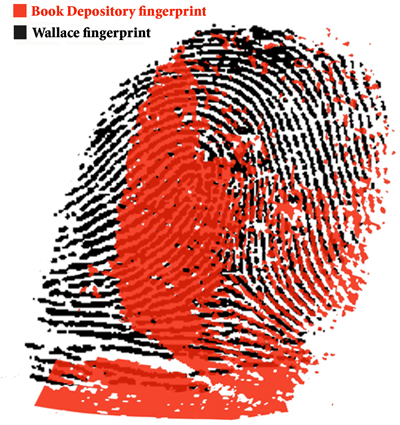
Investigators scoured the scene for fingerprints but the rifle and the boxes had apparently been wiped clean. The only forensic element that could possibly identify the killer was a partial fingerprint that was lifted from one of the cardboard boxes.
The print, as it turns out, belongs to Malcolm Wallace, the long time friend and associate of president Lyndon Baines Johnson. -LBJ killed Kennedy
Oswald was going to be caught and they knew it...better to lose him than not to get it done. He was nothing to them.
The way
in which Mac Wallace and Oswald met is not known. We know they did meet
and that they were together on the 6th floor of the Texas School Book
Depository when Kennedy was shot.
Johnson's attorney, Edward Clark
also brought in two (2) other participants, one a backup shooter
[Richard Cain] and the other a guard disguised as a Secret Service agent
[Charles "Chuckie" Nicoletti].
ASSASSINATION PAYMENT:
Each man involved in the JFK assassination plot received $50,000. The
money raised for the hit on the president had come from wealthy
right-wing Texas oilmen like Syd Richardson, H L Hunt, Clint Murchison
and Mike Davis.
On Aug. 16, 1978, Liberty Lobby Inc. published an article by former CIA
officer Victor Marchetti in its magazine, The
Spotlight.
In that article, Marchetti stated that E. Howard Hunt, also a former CIA
officer, was involved in the JFK assassination. Hunt sued Liberty Lobby
for libel in federal district court and won. However, in the appeals
trial, former CIA asset Marita Lorenz testified that on Nov. 21, 1963,
the day before the assassination, E. Howard Hunt was in Dallas, where he
delivered "sums of money for the so-called operation" to a small group
of men that included former CIA agent Frank Sturgis of Watergate fame
and Oswald killer Jack Ruby. The federal jury found for Liberty Lobby
Inc. and awarded costs to be assessed against Hunt.
The mastermind and
primary driving force behind the JFK assassination -- LBJ's personal
attorney -- Edward Clark, though he never directly admitted a payoff for
the assassination, told confidantes at his law firm that the total was
$2 million cash for him alone from the Texas right-wing oilmen. -
Robert Gaylon Ross' 1½-hr interview with Lyndon
Johnson's mistress, Madeleine Duncan Brown
Who exactly is Malcolm Wallace?
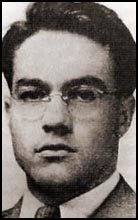 Malcolm
Wallace was born and educated in Texas. He was an intelligent man who
graduated from the University of Texas and it was
Edward Clark
who
introduced Wallace to
Lyndon
B. Johnson
and in October, 1950, he
began working with the United States Department of Agriculture in
Texas.
Malcolm
Wallace was born and educated in Texas. He was an intelligent man who
graduated from the University of Texas and it was
Edward Clark
who
introduced Wallace to
Lyndon
B. Johnson
and in October, 1950, he
began working with the United States Department of Agriculture in
Texas.
He first came to the attention of authorities when he was arrested in 1951, tried and convicted of killing a professional golfer named John Douglas Kinser. At the time, Kinser was having an affair with Lyndon Johnson's sister, Josefa -- and was also involved with Wallace's wife. Josepha was an alcoholic and drug user. She had a reputation for being promiscuous and, especially when she was high, she disclosed personal information and stories about Lyndon. It was feared that she might have already disclosed some illegal acivities about Johnson to Kinser, specifically certain activities he had engaged in during his race for the Senate.
In 1984, Estes' lawyer, Douglas Caddy, wrote to the Department of Justice claiming that Estes, Lyndon B. Johnson, Malcolm "Mac" Wallace, and Cliff Carter had been involved in the murders of Henry Marshall, George Krutilek, Harold Orr, Ike Rogers and his secretary, Coleman Wade, the president's sister Josefa Johnson, John Kinser and John F. Kennedy. Caddy added, "Mr. Estes is willing to testify that LBJ ordered these killings, and that he transmitted his orders through Cliff Carter to Mac Wallace, who executed the murders."[6]
Estes agreed to provide supporting proof to the FBI, which proffered immunity in exchange but Estes ultimately refused to produce any evidence.
This, then is the solution to the case: LBJ had Kennedy killed to save his political career and stay out of prison. It was just business as usual for LBJ and his little group; Texas was a rough old place in 1963 and LBJ was, in effect, running his own crime syndicate. And, of course, he became president.
 Estes
was accused of swindling investors, banks and the federal government of
at least $24 million through false
agricultural subsidy claims on cotton production and the use of
non-existent supplies of anhydrous ammonia fertilizer as
collateral for loans. He was eventually found guilty of additional
federal charges and sentenced to fifteen years in prison.
Estes
was accused of swindling investors, banks and the federal government of
at least $24 million through false
agricultural subsidy claims on cotton production and the use of
non-existent supplies of anhydrous ammonia fertilizer as
collateral for loans. He was eventually found guilty of additional
federal charges and sentenced to fifteen years in prison.
The "Arranger" -- Edward Clark
If the decision to murder Kennedy was made that night at the Murchison mansion, the plans must have been ready much earlier. This meeting in Dallas, the night before the assassination, was merely the failsafe point where the crafted and pre-meditated murder was given the "go ahead." It was a done deal.
From the testimony of Billy Sol Estes, a close associate of Johnson, we learn that the plot was coordinated by a man named Clark.
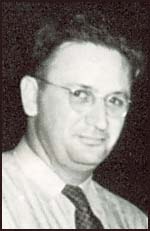 Edward
Aubrey Clark [right] was born San Augustine, Texas on 15th July,
1906. He obtained his first degree from Tulane University in New
Orleans. In 1927 Clark married Anne Metcalfe of Greenville, Mississippi,
and heir to the largest cotton plantation system in the South.
Edward
Aubrey Clark [right] was born San Augustine, Texas on 15th July,
1906. He obtained his first degree from Tulane University in New
Orleans. In 1927 Clark married Anne Metcalfe of Greenville, Mississippi,
and heir to the largest cotton plantation system in the South.
Clark received a law degree in 1928 from the University of Texas. After leaving law school, Clark became a county attorney in San Augustine. In 1932 he moved to Austin and served as assistant attorney general of Texas.
In 1935 Clark became assistant to Governor James Allred. Soon after he met Lyndon B. Johnson and the two men became close friends. The governor appointed Clark secretary of state in 1937. The following year Clark opened a private law practice with Everett Looney. He also worked as a political lobbyist for the oil industry. One of his main clients was Big Oil, a company owned by Clint Murchison. He was one of the "guests" at the Del Charro Hotel, owned by Murchison, and was known as the "arranger."
A few years after the assassination, Clark's law firm partner couldn't resist bragging about Clark's involvement in the affair. He told Barr McClellan, who worked at the firm, "I'm the only living man who knows what happened in Box 13..." (Referring to Johnson's rigged senate election) "But Clark took care of things in Dallas."
3. By early 1963 Havana Mobster Santo Trafficante had given up his attempts to assassinate Castro and turned his attention to JFK. Kennedy had angered two powerful underworld constituencies—the anti-Castro Cuban exiles, who felt he had betrayed them by withholding crucial air support during the Bay of Pigs invasion, and the Mob, who were on the receiving end of a relentless judicial assault engineered by the president's brother Attorney General Robert Kennedy.
According to many subsequent histories of the JFK assassination, Trafficante played a key role in the conspiracy to kill the president, along with New Orleans mafioso Carlos Marcello. In his memoir, attorney Frank Ragano contends that Trafficante virtually confessed the mob's role in the Kennedy assassination. "We shouldn't have killed Giovanni (John); we should have killed Bobby, " said Trafficant to Tagano many years after the fact.
SAM GIANCANA: "The politicians [LBJ and Clark] and the CIA made it real simple. We'd each provide men for the hit ... I'd oversee the Outfit [Mafia] side of things and throw in Jack Ruby and some extra backup and the CIA would put their own guys in to take care of the rest."
The nuts-and-bolts
planning had involved some of the top people on the Dallas police force;
most conveniently the mayor, Earle Cabell, was the BROTHER of former CIA
deputy director Charles
Cabell. As the man responsible for citywide security, the mayor provided
the police protection for the presidential motorcade.
Giancana grinned:
"They made sure it was so loose down there [Dealey Plaza] on the day of
the hit, shit, a 4-year-old could've nailed Jack Kennedy!"
Nicholas Katzenbach-Bill Moyers memo: Nothing to see here — On the day of JFK's funeral, Nov. 25, 1963, this document was sent from Assistant Attorney General Katzenbach to Bill Moyers, press secretary to the newly sworn-in President Johnson. It states, "The public must be satisfied that Oswald was the assassin; that he did not have confederates who are still at large; and that evidence was such that he would have been convicted at trial."The Warren Commission was created four days later.
RICHARD NIXON'S connections to organized crime and the JFK assassination
But Wait, There's More! CIA and mob links continue...or the so called Watergate Scandal
According to the FBI’s Watergate investigation, John Mitchell, the director of the Committee to Re-elect the President (CREEP), and his aide Jeb Stuart Magruder discuss the proposal made by G. Gordon Liddy to plant electronic surveillance devices on the phone of the chairman of the Democratic Party, Lawrence O’Brien (see March 20, 1971). Magruder telephones President Nixon’s chief of staff, H. R. Haldeman, and Haldeman confirms that Nixon wants the operation carried out.
According to Watergate burglar Eugenioby his old CIA code name “Eduardo” (see September 9, 1971), is ratcheting up the activities of the White House “Plumbers” operation. Martinez is not yet aware of the nature of the team’s operations, but believes he is part of a black-ops, CIA-authorized organization working to foil Communist espionage activities. Hunt gives team member Bernard Barker $89,000 in checks from Mexican banks to cash for operational funds, and orders Barker to recruit new team members. Barker brings in Frank Sturgis, Virgilio Gonzalez, and Reinaldo Pico, all veterans of the CIA’s activities against Cuba’s Fidel Castro. On May 22, the six—Hunt, Barker, Gonzalez, Martinez, Pico, and Sturgis—meet for the first time at the Manger Hays-Adams Hotel in Washington for Hunt’s first briefing. By this point, Martinez will later recall, G. Gordon Liddy, who had been involved in the burglary related to Pentagon Papers leaker Daniel Ellsberg, is involved. Hunt calls Liddy “Daddy,” and, Martinez recalls, “the two men seemed almost inseparable.” They meet another team member, James McCord, who unbeknownst to Martinez is an official with Nixon’s presidential campaign (see June 19, 1972). McCord is introduced simply as “Jimmy,” an “old man from the CIA who used to do electronic jobs for the CIA and the FBI.” McCord is to be the electronics expert.
Plans to Break into McGovern HQ - Martinez says that the group is
joined by “a boy there who had infiltrated the McGovern headquarters,”
the headquarters of the campaign of Democratic presidential candidate
George McGovern. According to Hunt, they are going to find evidence
proving that the Democrats are accepting money from Castro and other
foreign governments. (Interestingly, Martinez will write that he still
believes McGovern accepted Cuban money.) Hunt soon aborts the mission;
Martinez believes “it was because the boy got scared.”
New Plans: Target the DNC - Instead, he and Liddy begin planning
to burglarize the headquarters of the Democratic National Committee (DNC)
in the Watergate hotel and office complex. They all move into the
Watergate to prepare for the break-in. Martinez will recall: “We brought
briefcases and things like that to look elegant. We registered as
members of the Ameritus Corporation of Miami, and then we met in
Eduardo’s room.” The briefing is “improvised,” Martinez will recall.
Hunt says that the Castro funds are coming to the DNC, not McGovern’s
headquarters, and they will find the evidence there. The plans are
rather impromptu and indefinite, but Martinez trusts Hunt and does not
question his expertise. [Harper's,
10/1974]
Entity Tags: Frank Sturgis, Democratic National Committee, Central Intelligence Agency, Bernard Barker, ’Plumbers’, E. Howard Hunt, Fidel Alejandro Castro Ruz, George S. McGovern, James McCord, G. Gordon Liddy, Virgilio Gonzalez, Eugenio Martinez Category Tags: 'Plumbers', Nixon Campaign 'Dirty Tricks', Watergate Burglary
Maurice Stans, the financial chief for the Committee to Re-elect the President (CREEP), launches a final fundraising swing across the Southwest on behalf of Richard Nixon. Stans solicits contributions from Republicans and Democrats alike, and tells reluctant contributors that if they do not want their donations traced back to them, their anonymity can be ensured by moving their contributions through Mexican banks. Mexico does not allow the US to subpoena its bank records.
Laundering - “It’s called ‘laundering,’” Miami investigator
Martin Dardis later tells Washington Post reporter Carl Bernstein on
August 26, 1972. “You set up a money chain that makes it impossible
to trace the source. The Mafia does it all the time. So does Nixon.…
This guy Stans set up the whole thing. It was Stans’s idea.… Stans
didn’t want any way they could trace where the money was coming
from.” The same money-laundering system allows CREEP to receive
illegal contributions from corporations, which are forbidden by law
to contribute to political campaigns. Business executives, labor
leaders, special-interest groups, even Las Vegas casinos can donate
through the system. Stans uses a bank in Mexico City, the Banco
Internacional; lawyer Manuel Ogarrio Daguerre handles the
transactions. Stans keeps the only records.
 Nixon and Haldeman, three days after the June 23 meeting.
[Source: Washington Post]With the FBI tracing the
Watergate burglars’ $100 bills to GOP fundraiser Kenneth Dahlberg
(see
August 1-2, 1972), President Nixon orders the CIA
to attempt to stop the FBI from investigating the Watergate
conspiracy, using the justification of “national security.”
Nixon and Haldeman, three days after the June 23 meeting.
[Source: Washington Post]With the FBI tracing the
Watergate burglars’ $100 bills to GOP fundraiser Kenneth Dahlberg
(see
August 1-2, 1972), President Nixon orders the CIA
to attempt to stop the FBI from investigating the Watergate
conspiracy, using the justification of “national security.”
White House aide Charles Colson and Watergate burglar E. Howard Hunt discuss Hunt’s demand for “hush money” (see June 20-21, 1972 and March 21, 1973) in a telephone call. Hunt says he called “because the commitments that were made to all of us [Hunt and the other six burglars, all of whom are facing trial] have not been kept.” He continues: “There’s a great deal of concern on the part of the seven defendants. There’s a great deal of financial expense here that is not covered. What we’ve been getting has been coming in very minor drips and drabs. We’re now reaching a point at which—” “Don’t tell me any more,” Colson interjects. Hunt says, “[T]his thing should not break apart for foolish reasons,” which Colson interprets as a veiled threat that Hunt will begin talking to prosecutors about his involvement in the Watergate conspiracy. Colson seems to get the message: “Christ no.… You’ve told me all I need to know… the less I know really about what happened, the more help I can be to you.” Hunt says: “We’ve set a deadline now for the close of business on November 25 for the resolution, the liquidation of everything that’s outstanding.… I’m talking about promises from July and August. We could understand some hesitancy prior to the election (see November 7, 1972), but there doesn’t seem to be any of that now. Of course, we’re well aware of the upcoming problems of the Senate” (see February 7, 1973). Colson replies, “That’s where it gets hairy as hell.” Hunt continues: “We’re protecting the guys who were really responsible. That’s a continuing requirement. But this is a two-way street.… We think now is the time when some moves should be made, and surely your cheapest commodity is money.” [Reston, 2007, pp. 186-190] Shortly thereafter, Hunt receives more money from secret White House sources (see January 8-9, 1973).
Feb 7th 1973
all the presidents men = Thugs
The US Senate votes 77-0 to create the Select Committee on Presidential
Activities, which comes to be known as the Senate Watergate Committee.
The chairman is Sam Ervin (D-NC), Ervin, already chosen to head the
committee, told fellow senator Edward Kennedy (D-MA), who held his own
ineffective senatorial investigation, that he knew little more about the
Watergate conspiracy than what he read in the papers, but “I know the
people around [President] Nixon, and that’s enough. They’re thugs.”
[Bernstein
and Woodward, 1974, pp. 247]
In the wee hours in a deserted garage on Oct. 8, 1972
Deep Thoat (Felt) comments to Woodward:
how politics had infiltrated every corner of government—a strong-arm
takeover of the agencies by the Nixon White House…. [Felt] had once
called it the ‘switchblade mentality’—and had referred to the
willingness of the president’s men to fight dirty and for keeps….
The Nixon White House worried him. ‘They are
underhanded and unknowable,’ he had
said numerous times. On June 19, 1972, two days after the botched
break-in, Felt assured Woodward that The Post could safely make a
connection between burglars and a former CIA agent linked to the White
House, E. Howard Hunt.
He says, “In 1969, the first targets of aggressive wiretapping were the reporters and those in the administration who were suspected of disloyalty. Then the emphasis was shifted to the radical political opposition during the [Vietnam] antiwar protests. When it got near election time [1972], it was only natural to tap the Democrats (see Late June-July 1971 and May 27-28, 1972). The arrests in the Watergate (see 2:30 a.m.June 17, 1972) sent everybody off the edge because the break-in could uncover the whole program.” [Bernstein and Woodward, 1974, pp. 271]
he is referring to the
NSA’s Operation Shamrock
which Secretly Monitored US Citizens’ Overseas Communications
The NSA, working with British intelligence, begins secretly intercepting and reading millions of telegraph messages between US citizens and international senders and recipients. The clandestine program, called Operation Shamrock and part of a larger global surveillance network collectively known as Echelon (see April 4, 2001 and Before September 11, 2001), begins shortly after the end of World War II, and continues through 1975, when it is exposed by the “Church Committee,” the Senate investigation of illegal activities by US intelligence organizations (see April, 1976). [Telepolis, 7/25/2000] The program actually predates the NSA, originating with the Armed Forces Security Agency (AFSA) then continuing when that turned into NSA (see 1952). [Pensito Review, 5/13/2006] The program operates in tandem with Project Minaret (see 1967-1975).
Together, the two programs spy on both foreign sources and US citizens, especially those considered “unreliable,” such as civil rights leaders and antiwar protesters, and opposition figures such as politicians, diplomats, businessmen, trades union leaders, non-government organizations like Amnesty International, and senior officials of the Catholic Church. The NSA receives the cooperation of such telecommunications firms as Western Union, RCA, and ITT. [Telepolis, 7/25/2000] (Those companies are never required to reveal the extent of their involvement with Shamrock; on the recommendations of Defense Secretary Donald Rumsfeld and presidential chief of staff Dick Cheney, in 1975 President Ford extends executive privilege to those companies, precluding them from testifying before Congress.) [Pensito Review, 5/13/2006] In the 1960s, technological advances make it possible for computers to search for keywords in monitored messages instead of having human analysts read through all communications. In fact, the first global wide-area network, or WAN, is not the Internet, but the international network connecting signals intelligence stations and processing centers for US and British intelligence organizations, including the NSA, and making use of sophisticated satellite systems such as Milstar and Skynet.
The Senate votes 55-24 to pass a resolution opposing any more Watergate pardons (see September 8, 1974) until defendants can be tried, rendered a verdict, and exhaust their appeals process, if appropriate.
In 1977 the commentators were shocked when Nixon said about his burglaries and wiretaps, ‘If the president does it, that means it’s not illegal’ (see April 6, 1977).… These brazen words… come eerily down to us through the tunnel of the last thirty years.” - Reston
“In the area of criminal activity, Nixon argues, the president is immune. He can eavesdrop; he can cover up; he can approve burglaries; he can bend government agencies like the CIA and the FBI to his own political purposes. He can do so in the name of ‘national security’ and ‘executive privilege.’ And when these acts are exposed, he can call them ‘mistakes’ or ‘stupid things’ or ‘pipsqueak’ matters. In the 21st century, Nixon’s principle has been extended to authorizing torture, setting up secret prisons around the world, and ignoring the requirement for search warrants. A president can scrap the Geneva Convention and misuse the Defense Department and lie about the intelligence analyses. He is above the law. This is especially so when the nation is mired in an unpopular war, when the country is divided, when mass protests are in the streets of America, and an American president [Bush] is pilloried around the world.
_______________
Savings and Loan scandal
Subject: more S&L links CIA money laundering
Keywords: more of Pete Brewton's uncovering of CIA-MOB-S&L connections
The following article appeared in the August edition of "The Monthly Planet, a publication of the Nuclear Weapons Freeze of Santa Cruz County, Box 8463, Santa Cruz, CA 95061, 408/429-8755. This is a very useful and informative alternative media source offering an 11- issue/year subscriptions for $15. ($10 for student/senior/low income)
-------------------------------------------------------------------------
CIA Links to the Savings & Loan Scandal
by Joseph A. Palermo
The federal government is now just beginning to sift through the wreckage of what appears to be the largest crime in American history. The Office of Thrift Supervision, which oversees the nation's savings and loans, is barely able to record the collapse of over 1,300 financial institutions, let alone do anything to arrest it. Congress has done little to spotlight the full scope of the savings and loan fraud, even though it has estimated the cost to taxpayers will be $500 billion over the next 40 years. In other words, it will cost every American man, woman, and child at least $2,000 to pay for what "Time" magazine called "a decade-long orgy" of wild spending and speculation resulting in the establishment of government guarantees that "privatized profits and socialized losses." The Justice Department estimates that massive fraud caused the failure of 450 savings and loans seized so far by the federal government. It also estimates that it will take over five years to prosecute the 100 institutions on its priority list.
Most of the money lost in S&L failures has yet to be traced to its ultimate destination.
Worthless loans, kickbacks, false appraisals, and insider fraud have accounted for much of the misspent funds. Federal and congressional investigators who have the subpoena power to trace the money have shown little interest in doing so. Federal regulatory agencies have suffered enormous cutbacks in recent years as part of the Reagan-Bush legacy of deregulation, and are hopelessly understaffed and underfunded to take on a financial crisis of this magnitude. Most of the billions of dollars "lost" have been so expertly laundered or tied to assets through shell companies and off- shore banks that the Justice Department predicts that hundreds of cases will go unprosecuted. Criminal activity was the primary cause in the collapse of two of every five S&Ls that failed. A significant number of insolvent thrifts which could cost taxpayers as much as $75 billion have been linked to the activities of organized crime figures and CIA operatives. In a series of articles published in the "Houston Post" earlier this year, investigative reporter Pete Brewton unearthed numerous ties with the CIA, the Mafia, or both in the failure of at least 25 savings and loans, including 16 in Texas. Some of the players have also been involved in gun-running, drug- smuggling, money laundering, and covert aid to the Nicaraguan Contras. Fraud was the key factor in the failure of each of these S&Ls. Richard Brenneke, a CIA contract agent for eighteen years and a Portland, Oregon arms dealer, testified during a federal court trial in Denver in 1988 that the CIA effort to raise money for covert operations involves a number of schemes to siphon funds from financial institutions "at the expense of an insurance company," meaning the federal deposit insurance program. After the trial, Brenneke told the "Houston Post" that banking and S&L officials involved in such schemes were required to sign "secrecy agreements" with the CIA. Evidence obtained from court documents, sworn testimony, law enforcement records and interviews with government investigators and prosecutors suggests that the CIA may have used part of the proceeds from S&L fraud to help pay for covert operations and other activities that Congress was unwilling to support. Brewton following an 18-month investigation, also found evidence that the CIA may have intervened in criminal investigations involving agency operatives accused of S&L fraud. Lloyd Monroe, a former prosecutor with the Justice Department's organized crime strike force, said federal agencies responsible for investigating S&L fraud are "being precluded from investigating wrongdoing that is possibly being conducted in the name of national security." The former prosecutor said he was told by FBI agents to drop an investigation of one individual connected to bank failure because that individual had "CIA connections" and therefore held a "get-out-of-jail-free card." A former FBI agent has corroborated the prosecutor's statements. Brewton's articles in the "Houston Post" eventually caught the attention of Rep. Frank Annunzio (D-IL) who chairs the financial institutions subcommittee of the House Banking, Finance and Urban Affairs Committee. The subcommittee has jurisdiction over all legislation affecting banks, thrifts, credit unions and the federal agencies that regulate them. Annunzio has asked CIA Director William Webster to appear before the panel in a closed-door session to address the evidence of CIA involvement in S&L fraud. But CIA Director Webster has refused to testify before Annunzio's subcommittee and the CIA has only provided vague denials of its involvement through its public relations office. In response to the allegations, CIA spokesperson Mark Mansfield said that S&L fraud "would be a violation of U.S. laws, and we do not violate U.S. laws." CIA Public Affairs Director James Greenleaf sent a letter to the "Houston Post" in response to Brewton's article of February 4, 1990, which first made the connection between the CIA and some failed thrifts, stating that "for the record, such a claim is not true; the CIA would not participate in fraudulent activities." Because CIA Director Webster refused to testify and because Rep. Annunzio's subcommittee staff is limited, Annunzio has asked Rep. Anthony Beilenson (who chairs the House Permanent Select Committee on Intelligence, which has jurisdiction over the CIA) to undertake a complete investigation of the various allegations involving the CIA and failed financial institutions. Annunzio wrote to Beilenson: "In the face of the billions of dollars that are being paid to protect depositors, we cannot allow any suggestion that the Central Intelligence Agency was behind the failure of any financial institution not to be investigated." Annunzio also wrote referring to the derailed criminal investigations, "I do not think a well-respected former justice Department prosecutor and a former FBI agent would make up something so serious as the CIA charges." The CIA has promised to "fully cooperate" with any investigation by the intelligence committee. If the intelligence committee decides to pursue a serious investigation, a number of connections between individual CIA operatives, organized crime figures, and failed financial institutions will have to be explored. For example, Robert L. Corson, a Houston developer connected with the fraud-related failures of several S&Ls, has been identified by a former CIA operative as a "mule," meaning that he carried large sums of unaccountable cash from country to country for the agency. The CIA would neither confirm nor deny whether Corson had a relationship with the agency, a common agency practice. Lawrence Freeman, a lawyer who helped engineer a fraudulent Florida land transaction that caused the collapse of two savings and loans, allegedly has ties to both the CIA and organized crime. Freeman, a twice-convicted money launderer, has ties to the CIA dating back to the early 1960s when he worked with the late Paul Helliwell. Helliwell was a top officer in southeast Asia in World War II with the Office of Strategic Services, the wartime predecessor of the CIA, and was a close associate of the late William Casey, Reagan's CIA director. Helliwell was a founding member of the CIA and participated in many covert operations including efforts to overthrow Cuban leader Fidel Castro. Freeman and Helliwell were senior partners in Castle Bank and Trust in the Bahamas during the early 1970s when it was used by the CIA and organized crime to launder money. Freeman pleaded guilty to laundering money for a convicted drug smuggler and was sentenced to three years in prison. He is now out on parole but is barred from practicing law. Freeman and Helliwell's Castle Bank and Trust folded in 1977, following Helliwell's death. According to journalist Jonathan Kwitny, the author of "The Crimes of Patriots," it was then that the CIA and the Mafia turned over their money laundering operations to the infamous Nugan Hand Bank in Australia and to companies in the English Channel tax haven of the Isle of Jersey. Freeman allegedly wired millions of dollars to shell companies on the island as part of the land transaction that played a role in the failure of two thrifts. Some of the money from this deal may have been diverted for use in CIA-sponsored covert operations. Officers of these companies were also reportedly used by Freeman to launder drug smuggling proceeds.But Freeman's biggest money laundering client, according to Florida Department of Law Enforcement records, was an organized crime figure called "the Cobra" by Freeman and his associates. Law enforcement sources in Florida and Texas have identified "the Cobra" as Mafia boss Santo Trafficante.
Trafficante's involvement in the CIA's attempt to assassinate Fidel Castro in the early 1960s is well documented. During this period, he was also involved with Helliwell in CIA-sponsored anti-Castro activities. A close associate of Trafficante who also participated in CIA anti- Castro plots was New Orleans Mafia boss Carlos Marcello. Marcello has extensive business ties with fellow Louisiana organized crime figure Herman Beebe. Beebe pleaded guilty to fraud in connection with a loan at State Savings in Dallas and has twice been successfully prosecuted. He was involved in a scheme in the early 1970s to smuggle guns and explosives to anti-Castro Cubans operating in Mexico. Beebe also had business dealings with Edward "Fast Eddie" Susalla, whose son Scott pleaded guilty to possession of cocaine in 1985 in one of the largest drug busts in southern California history. It was Herman Beebe who provided the seed capital for the creation of Palmer National Bank in Washington, D.C., which was controlled by two officials of the George Bush 1980 presidential campaign, Stefan Halper and Harvey McLean. Halper was policy director for Bush's 1980 campaign, while McLean was southern finance chairman and a Bush fundraiser. McLean became a major player in a number of failed savings and loans in Texas where fraud was a factor and has been placed in involuntary bankruptcy. McLean owned Paris Savings and Loan in Paris, Texas, which failed in 1988 and was merged with 11 other insolvent Texas S&Ls at a total cost to the federal government of $1.3 billion. The "New York Times" and the "Washington Post" reported that Palmer National Bank actively arranged loans for wealthy, right-wing Republicans and their pet projects. Halper and McLean first met while they were working on the Bush 1988 presidential campaign. Palmer National loaned money to individuals and organizations that were involved in covert aid to the Nicaraguan Contras. In February 1985 the National Endowment for the Preservation of Liberty (NEPL), a conservative foundation run by Iran-Contra figure Carl "Spitz" Channell, secured $650,000 from Palmer National to illegally purchase weapons for the Nicaraguan Contras. Channell was one of the few private citizens convicted of crimes in the Iran-Contra scandal. He was the first to plead guilty to illegal activities in the scandal, and was placed on two years' probation for illegally using NEPL to help Oliver North raise donations for military supplies for the Contras. Channell recently died of pneumonia while recovering from a car accident. The money went through NEPL's account at Palmer National to a Swiss bank account used by North for Contra funding and the secret arms deals with Iran. NEPL raised about $10 million for the Contras after Congress had banned such military aid. While Stefan Halper was helping NEPL secure loans at Palmer National to buy guns for the Contras, his father-in-law Ray Cline, a former deputy director of intelligence in the CIA, was an adviser to a firm associated with retired Major General John Singlaub, one of the principal leaders of private efforts to supply the Contras. In addition, the National Conservative Political Action Committee (NCPAC) borrowed more than $400,000 from Palmer National, as did political action committees for Senator Bob Dole (R-KS.) and then-Rep. Jack Kemp (R-NY). Palmer National co-founder Halper also helped set up Oliver North's legal defense fund. Halper's name appears in North's final entry in his White House notebook the day he was fired by the president on November 25, 1986, under the heading "Legal Defense Fund." "Ollie is a friend of mine and at the time I thought we might be able to help him," Halper later recalled. Finally, Palmer National, although still solvent, held a $250,000 note on a California beach house that was used by organized crime associates and figured in the criminal convictions of two savings and loan figures. Halper's connections to the intelligence community were primarily through his former father-in-law Cline, a career CIA officer. Cline became a top foreign policy and defense adviser to George Bush during the 1980 campaign. According to an article which appeared in the "Village Voice" in 1988, when Bush was seeking the Republican presidential nomination, Cline boasted during the 1980 primaries that he intended to "organize something like one of my old CIA staffs" to help Bush win. The "New York Times" reported that Bush, who was CIA director from January 1976 to January 1977, received offers of campaign assistance from many former CIA officials. The "Village Voice" reported that even active CIA agents may have worked for the Bush campaign. Some key operatives who were linked to the CIA and played significant roles in failed thrifts in Texas also worked for George Bush's Presidential campaign. For example, Halper, in addition to being a co-founder of Palmer National Bank and policy director for the Bush campaign, was allegedly part of the Reagan-Bush election team that participated in the October 1980 Paris negotiations with representatives of Iran that has come to be known as the "October Surprise." Halper worked with long-time CIA official Robert Gambino in an intelligence operation guided by Reagan-Bush campaign director William Casey (who went on to become CIA director). According to former CIA agent Richard Brenneke and several independent researchers, there was a secret effort by the Reagan-Bush campaign to make contacts with Iranian government officials to offer arms and other concessions if Iran agreed to hold the American hostages until after Jimmy Carter's defeat in the November 1980 election, thus avoiding an "October Surprise" release of the hostages. William Casey, Richard Allen (who became Reagan's first National Security Adviser), George Bush, and Stefan Halper were all allegedly involved in the plan, which involved super-secret meetings in Paris in October 1980. Halper also emerged as a key figure in the so-called "Debategate" scandal. A House subcommittee concluded that James Baker, who was in charge of the Reagan debate group, obtained then-President Jimmy Carter's briefing materials for the upcoming debates with Ronald Reagan from William Casey, who was then the Reagan-Bush campaign director. Someone within the Carter White House pilfered Carter's debate briefing notes and passed them on to the Reagan-Bush team. Halper allegedly played a role in both the "October Surprise" and "Debategate," and was rewarded after the election with the appointment of Deputy Director of Politico-Military Affairs for the State Department. William Casey went on to become CIA director, James Baker became Reagan's chief of staff, then Treasury Secretary, and then Bush's Secretary of State. Baker was instrumental in first bringing Halper into the Reagan-Bush campaign. Meanwhile, charges of conflict of interest against Neil Bush, the President's son, will be taken up at a September hearing by federal regulators. The younger Bush served on the board of directors of Silverado Banking, Savings and Loan Association of Denver, Colorado, which collapsed in December 1988 at an estimated cost to taxpayers of $1.3 billion. The charges accuse Bush of voting to loan over $100 million to business associates who subsequently defaulted, and failing to properly disclose the extent of his business dealings with the borrowers. Federal regulators may file a $200 million lawsuit against Neil Bush and other Silverado directors and officers. The Office of Thrift Supervision released documents stating that the 34-year-old Bush was "unqualified and untrained" to be a director of Silverado. "He had no experience managing a large corporation, especially a financial institution with almost $2 billion in assets," the OTS documents said. With the president's son involved in the failure of one of the larger S&Ls, the crisis has received more attention in Washington and in the media. So far both Democrats and Republicans have pointed the finger at each other. Democratic National Committee Chair Ron Brown said that Republicans cannot escape the fact that "George Bush, Ronald Reagan and their high-roller friends ran the government, designed the S&L policy and handpicked the people that gutted the oversight agencies. They are now being forced to take responsibility for the greatest rip-off in American history." It will be difficult for the Republicans to skirt this issue in the upcoming mid-term elections and therefore the savings and loan crisis may have immediate political effects. Time will tell whether or not the American taxpayer will be able to bear the burden of yet another expensive scandal. Joseph A. Palermo teaches United States History at Hartnell Community College in Salinas, and Gavilan Community College in Gilroy. -- daveus rattus yer friendly neighborhood ratman KOYAANISQATSI ko.yan.nis.qatsi (from the Hopi Language) n. 1. crazy life. 2. life in turmoil. 3. life out of balance. 4. life disintegrating. 5. a state of life that calls for another way of living.
---------------------------------------------------------------------------One White House, many gates By Joel Bleifuss
The "Houston Post"'s Pete Brewton continues to report on CIA and organized crime involvement in the failure of 25 federally insured financial institutions, the bailout of which will cost the taxpayers an estimated $75 billion. Though this time the money trail leads straight to the White House door, the papers of record--the "New York Times," "Washington Post" and "Los Angeles Times," upon which we must unfortunately depend to set the national agenda--continue to ignore the "Houston Post" series. Brewton's latest installment details the story of a solvent institution, the Palmer National Bank of Washington, D.C. Founded in 1983 by two men active in George Bush's failed 1980 presidential campaign, Palmer was the bank of choice for right-wing organizations and Republican officials. The National Conservative Political Action Committee borrowed more than $400,000 from Palmer. It also lent money to PACs headed by Republicans Sen. Bob Dole of Kansas and former Rep. Jack Kemp of New York. And Palmer was one of the financial institutions where convicted Irangate felon Oliver North's contra-aid network stashed its cash. Palmer has assets of less than $100 million, a surprisingly meager amount for a bank that occupies a modern 11-story building three blocks from the White House. IRANGATE: Brewton reports that in February 1985, the contra-support organization National Endowment for the Preservation of Liberty (NEPL) opened its first of four accounts at Palmer. In April 1986, NEPL transferred $650,000 from one of those accounts to a Swiss bank account that North used to deal arms to Iran and thus fund the contras. NEPL was founded by the late Carl "Spitz" Channell, who died this year of pneumonia. This crack fundraiser brought in about $10 million for the ClA's anti-Sandinista army, including $5 million that Channell charmed out of two right-wing dowagers whom he code-named "Dog Face" and "Ham Hocks." As a token of NEPL's appreciation, large donors were able to meet privately with then-President Reagan. After the Iran-contra scandal broke, it was discovered that not all the NEPL money had reached the contras--some of it had been siphoned off for Channell's and his boyfriend's personal use. But Channell was not sentenced to two years' probation for this diversion of funds. (Contra dollars were used to purchase silk underwear and a condo, among other things.) He was convicted for helping the Reagan-Bush White House arm the contras at a time when Congress had outlawed such military support. A HALPER HAND: Brewton reports that a former high-level Palmer employee told him that Channell established his NEPL accounts at Palmer with the help of Stefan Halper, one of the bank's two founders and a friend of North's. Halper was policy director of Bush's 1980 presidential campaign. Halper was connected to the intelligence community through his father-in-law, Ray Cline, a former CIA deputy director who also advised Bush during his 1980 campaign. The "Village Voice" reported in 1988, "Any inquiry into the 1980 Bush campaign would have to begin with Dr. Ray S. Cline. ... Cline boasted during the primaries that he intended to 'organize something like one of my old CIA staffs' to help Bush win." DEBATEGATE: Well, Bush didn't win, but the Reagan-Bush ticket did. When Reagan named Bush as his running mate, Halper was brought on the 1980 Reagan-Bush campaign by another former Bush campaign official, James Baker, current secretary of state. According to a 1983 story in the "New York Times," Halper's role on the campaign was to gather intelligence on then-President Jimmy Carter's foreign-policy objectives. The "Times" reported that Halper was assisted by retired CIA officers and quoted an unnamed source in the 1980 Reagan-Bush campaign as saying, "There was some CIA stuff coming from Halper, and some agency guys were hired." Halper was particularly interested in Carter's attempts to gain the release of the 52 American hostages held in Iran prior to the November election. (Hostagegate: It has been alleged that the 1980 Reagan-Bush campaign cut a secret arms-for-hostages deal with the government of Iran to keep the hostages held in Iran until after the election to prevent Carter from benefiting from their pre-election release. See "In Short," June 24, 1987, Oct. 12, 1988, and "The First Stone," May 9 and 16). Halper's intelligence-gathering work during the 1980 Reagan-Bush campaign apparently involved the theft of the Carter campaign's debate briefing books, a scandal that came to be known as Debategate. The Reagan-Bush campaign used these books to prepare its candidate for the 1980 presidential debates. The man in charge of the Reagan debate team was Baker, whose name has come up as a likely Republican candidate for president in 1996. A BANK IS BORN: After the 1980 election, the Reagan administration appointed Halper deputy director of the State Department's Bureau of Politico-Military Affairs, the division of the State Department responsible for international weapons-trading and military exercises oversees. Brewton reports that Halper left the State Department in 1983 to become chairman of Palmer National Bank. Halper founded Palmer with Harvey McLean Jr., a man he had met during the 1980 Bush campaign. The "New York Times" has described McLean as "a Dallas real-estate developer who was Southern finance chairman for George Bush's campaign for the Republican presidential nomination in 1980." Halper and McLean came up with their idea for Palmer National Bank during a State Department business trip to Southeast Asia on which McLean accompanied Halper. Halper told Brewton the following story: "Somewhere over the Pacific, we got into a conversation about banking. Now, mind you, I had never been a banker. I was one of those guys who had a checking account with $71.38 in it, and banks frightened me a little bit. But Harvey said, 'Well, got to have a good bank in Washington.' He was sort of bemoaning the fact that banks were not as strong or responsive as they should be. And as the conversation unfolded, he basically said, 'Look, if you'll create the bank I'll put up the money.'" McLean certainly had access to money at that time. Brewton reports that McLean owned Paris Savings and Loan of Paris, Texas. During the '80s McLean also borrowed more than $38 million from three other S&Ls--Vernon Savings and Independent American Savings in Dallas and Continental Savings in Houston. All four later failed, and the latter three are included on Brewton's list of failed S&Ls that had links to the mob and the CIA. In 1989 federal receivers placed McLean in involuntary bankruptcy. S&LGATE: Brewton reports that when Palmer National Bank was founded, it was not McLean who put up the money but Herman K. Beebe Sr., a shadowy Louisiana organized-crime figure who was a close friend and business associate of McLean. Brewton reports that Beebe has numerous connections to New Orleans Mafia boss Carlos Marcello, associations with Mafia families in New York and California and links to the Teamsters. In 1983 Beebe loaned McLean and Halper $2.8 million from his Bossier Bank and Trust in Shreveport, La. This loan provided the majority of the money that was used to initially capitalize Palmer. A 1985 report by the comptroller of the currency listed Palmer as one of 12 national banks that Beebe has possible influence or control over. Further, Beebe has been implicated in the failure of at least 12 savings and loans (including Vernon Savings in Dallas and Continental Savings in Houston). In April 1985, just after Beebe had been convicted of defrauding the Small Business Administration and two months before the Federal Deposit Insurance Corporation shut down Bossier, the $2.8 million loan from Bossier that established Palmer was transferred to San Jacinto Savings of Beaumont, Texas. GOING, GOING ...: San Jacinto, a subsidiary of the Dallas-based real- estate investment firm Southmark Funding, is now on the verge of collapse. When San Jacinto topples, federal regulators say its bailout could cost taxpayers more than the estimated $2 billion that was paid to bail out Charles Keating's Lincoln Savings of Irvine, Calif., which currently holds the honor of being the most expensive S&L failure. Brewton reports that in September 1988 an S&L regulator in Dallas wrote to Darrel Dochow, a federal bank regulator, expressing concerns about the "significant number and volume" of loans between Silverado Savings of Denver (Neil Bush's failed S&L) and M.D.C. Holdings of Denver (owned by Colorado GOP fundraiser Larry Miezel) and between San Jacinto Savings of Houston and Lincoln Savings of Irvine, Calif. The regulator also said he was concerned about "the apparent shifting of such loans among those institutions." ANOTHER HALPER HAND: Brewton reports that Halper left his position as chairman of Palmer early in 1985 to become chairman of National Bank of Northern Virginia. Halper, however, did not sever his ties with his friend Oliver North. In the last entry of North's diary--dated Nov. 25, 1986, the day that the lieutenant colonel was fired by the president he had served so faithfully--North wrote "Legal Defense Fund--Stefan Halper, Chris Lehman [a Halper associate]." As Halper told Brewton, "We got trustees and put it in place."
=============================================================================
Perelman first entered what became known as the Savings & Loan crisis in 1988 when along with Gerald J. Ford he bought five insolvent thrifts with $12.2 billion in assets and $5.1 billion in federal aid for $315 million.[13] The five banks originally operated as a single entity named First Texas Bank, but the name changed to First Gibraltar after about a week.[14] Perelman's turn-around manifested as trimming the payroll, selling branches, and dumping of $2.5 billion of underperforming assets. In 1990, Perelman added San Antonio Savings Association and Sooner Federal to First Gibraltar for $10.1 million and $5.1 million, respectively. The purchase of San Antonio added $1.1 billion of healthy assets, $1.2 billion unhealthy assets, and a $1.3 billion government cash advance to Perelman's larder while Sooner only provided $1.2 billion in assets along with the typical government guarantees.[15][16] Sooner Federal was not only the last S&L Perelman bought, but the first he sold; In August 1992, he sold the pieces of Sooner to Bank of Oklahoma and Fourth Financial Corporation for $31.4 million.[15] The following month he sold the rest of First Gibraltar to BankAmerica for $110 million, retaining four branches in Plano, Texas and $1.2 billion of assets in the mortgage and property management sectors.[17] He renamed the four branches First Madison.[18] It's unclear how much money Perelman made from his savings & loan deals, but it's estimated that he made anywhere from $600 million to $1.2 billion with most of the profits manifesting as tax breaks elsewhere in his empire.[19] In essence, by owning First Gibraltar he was able to avoid paying hundreds of millions in federal taxes.[20] The following article, summarizing Pete Brewton's, ("Houston Post's" investigative reporter) continuing examination of CIA and organized crime involvement in the failure of various S&Ls, appeared in "IN THESE TIMES", July 18-31
As documented by Pete Brewton, author of The Mafia, the CIA and George Bush, Bush was deeply connected with a small circle of Texas elites tied to the CIA and the Mafia, as well as the Florida-based CIA/anti-Casto Cuban exile/ Mafia milieu.
As Richard Nixon's hand-picked Republican National Committee chairman, and later as CIA director, Bush senior constantly covered-up and stonewalled for his boss about Watergate, which itself (by the admission of Frank Sturgis and others) was a cover-up of the JFK assassination.
The Bush-Hoover Document: What did Bush the First know? —
On Nov. 29, 1963, FBI Director J. Edgar Hoover drafted a memo titled
"Assassination of President John F. Kennedy" to Roger Hilsman, the
director of the Bureau of Intelligence and Research. In it, Hoover
stated, "information was furnished to Mr. George Bush of the Central
Intelligence Agency." This has piqued the interest of researchers
because George H.W. Bush wasn't officially affiliated with the CIA until
he was named director in 1976.
|
============================================================================= |
___________________
Where does this sordid US history of politics, black-ops, big money, and corruption get us?
Read on...if you dare
visit the Cheney page...
_______________
